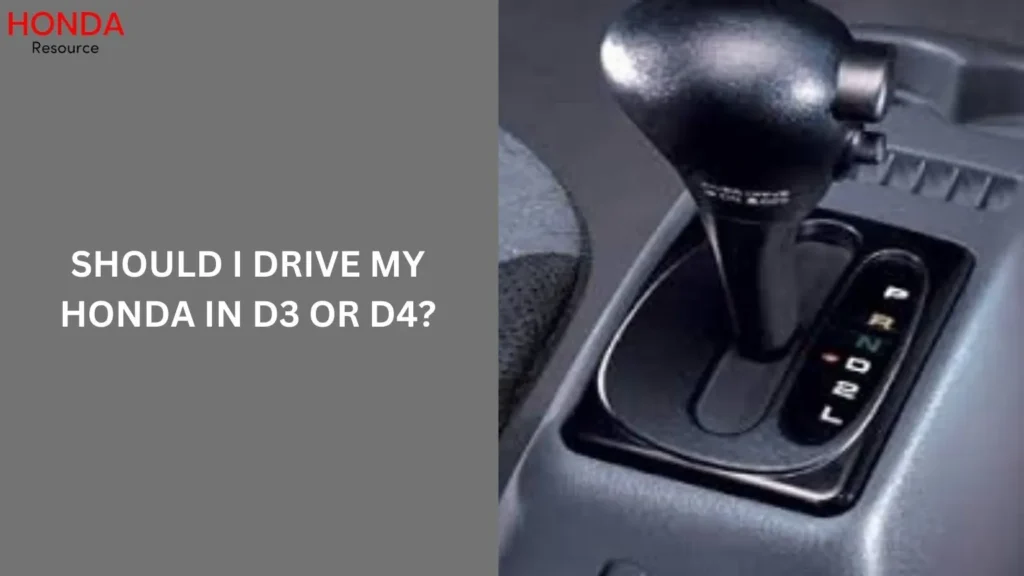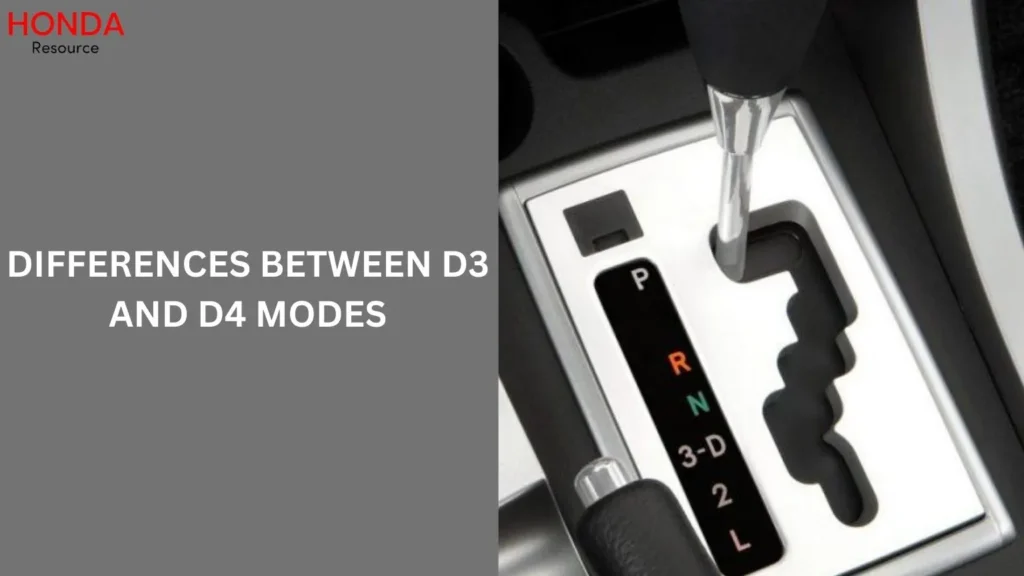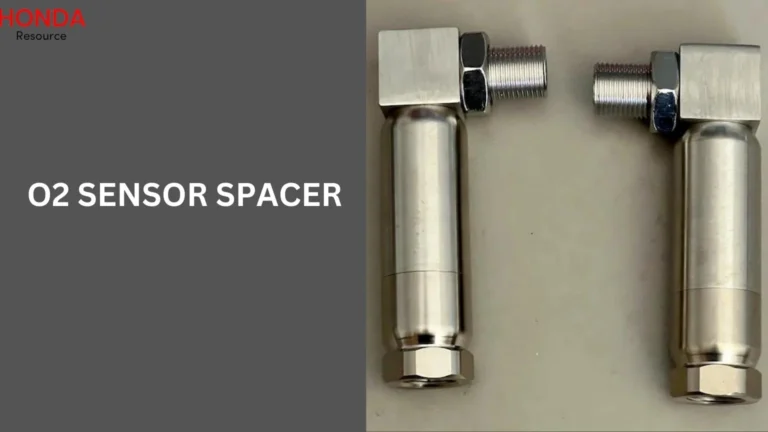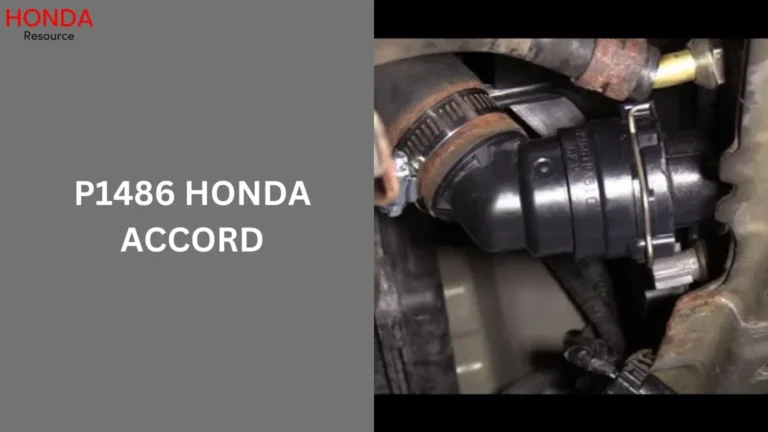Should I Drive My Honda In D3 Or D4? (Guide) of 2024
Should I Drive My Honda In D3 Or D4? Driving a Honda vehicle equipped with an automatic transmission often presents a choice between different driving modes, notably D3 and D4.
Understanding when and why to use each mode can significantly impact your driving experience, fuel efficiency, and even the longevity of your vehicle’s transmission.

Introduction to Honda Transmission Modes
Honda vehicles equipped with automatic transmissions offer drivers the flexibility of choosing between different drive modes, commonly known as D3 and D4. Understanding these transmission modes and knowing when to utilize them can significantly enhance your driving experience, optimize fuel efficiency, and ensure the longevity of your vehicle’s transmission system.
What are D3 and D4 Modes?
In Honda vehicles, D3 and D4 refer to specific drive modes within the automatic transmission system. These modes dictate how the transmission behaves in terms of gear selection and shifting patterns based on driving conditions and the driver’s preferences.
Purpose of D3 and D4 Modes in Honda Vehicles
The primary purpose of D3 and D4 modes is to provide drivers with control over the transmission’s behavior to suit different driving scenarios. Whether you’re navigating through city streets, cruising on the highway, or towing heavy loads, selecting the appropriate mode can optimize performance and efficiency.
Understanding D3 Mode
D3 mode in Honda vehicles serves a specific function within the automatic transmission system, offering drivers a tailored approach to handling various driving conditions. Here’s a detailed look into what D3 mode entails and when it’s advantageous to utilize it during your driving experience.
When to Use D3 Mode?
D3 mode is typically used in situations where a lower gear is preferred, such as when climbing hills, towing, or when additional engine braking is needed.
Benefits of Driving in D3 Mode
Driving in D3 can improve vehicle responsiveness in certain conditions, providing better control over acceleration and deceleration.
Limitations or Considerations
However, prolonged use of D3 mode at high speeds or during regular city driving may result in decreased fuel efficiency and increased transmission wear.
Understanding D4 Mode
D4 mode in Honda vehicles is a fundamental setting within the automatic transmission system, designed to optimize performance and fuel efficiency under typical driving conditions. Here’s a comprehensive overview of what D4 mode entails and when it’s advantageous to utilize it during your driving experience.
When to Use D4 Mode?
D4 mode is the default drive mode for regular driving conditions on flat roads and highways, offering a balance between performance and fuel efficiency.
Benefits of Driving in D4 Mode
D4 mode optimizes fuel efficiency by allowing the transmission to shift through its gears smoothly, providing comfortable and efficient driving.
Limitations or Considerations
Using D4 mode in situations requiring more power, such as towing heavy loads or climbing steep grades, may cause the transmission to overheat or shift uncomfortably.
Differences Between D3 and D4 Modes

Understanding the distinctions between D3 and D4 modes in Honda vehicles is crucial for optimizing driving performance and efficiency. Here’s an in-depth comparison highlighting their respective advantages and applications.
Performance Differences
- D3 Mode:
- Purpose: D3 mode prioritizes torque and power delivery, making it suitable for challenging driving conditions such as climbing steep inclines or towing heavy loads.
- Transmission Behavior: It keeps the transmission in lower gears to maximize engine braking and provide immediate power when needed.
- D4 Mode:
- Purpose: D4 mode focuses on balancing performance with fuel efficiency, making it ideal for everyday driving on flat roads and highways.
- Transmission Behavior: It allows the transmission to shift smoothly through gears, optimizing fuel consumption during steady-state driving.
Fuel Efficiency Comparison
- D3 Mode:
- Typically consumes more fuel compared to D4 mode due to higher engine RPMs sustained in lower gears.
- Efficient in situations requiring immediate power but less so in prolonged highway driving or city commuting.
- D4 Mode:
- Offers better fuel efficiency under normal driving conditions by operating at higher gears, reducing engine workload and fuel consumption.
- Ideal for maintaining economical driving habits during long-distance travel or regular city commuting.
Transmission Wear and Tear
- D3 Mode:
- Prolonged use in demanding conditions may accelerate transmission wear, especially if frequently engaged for towing or uphill climbs.
- Requires periodic maintenance to ensure optimal transmission performance and longevity.
- D4 Mode:
- Minimizes transmission wear by operating at optimal gears for efficiency, reducing strain on internal components.
- Suitable for extending the lifespan of the transmission system during routine driving scenarios.
Application Scenarios
- D3 Mode:
- Recommended for situations requiring enhanced vehicle control and power delivery, such as towing trailers or navigating challenging terrain.
- Best used sparingly and selectively to prevent unnecessary strain on the transmission.
- D4 Mode:
- Preferred for everyday driving, including city commutes and highway cruising, where maintaining fuel efficiency and smooth performance are priorities.
- Ensures a balanced driving experience without compromising on vehicle responsiveness or transmission longevity.
Driving Scenarios: When to Choose D3 Over D4 (and Vice Versa)
Choosing between D3 and D4 modes in Honda vehicles depends largely on the driving conditions and specific requirements at hand. Here’s a practical guide to help you decide which mode is most suitable for various scenarios:
City Driving
In stop-and-go traffic or situations requiring frequent acceleration and deceleration, D4 mode is generally more suitable for maintaining fuel efficiency and smooth driving.
Highway Driving
On highways or open roads with consistent speeds, D4 mode is ideal for maximizing fuel economy and reducing engine strain over long distances.
Towing or Heavy Load Conditions
When towing trailers or carrying heavy loads, using D3 mode can provide better control and prevent transmission overheating by reducing gear shifting.
Expert Tips for Honda Transmission Mode Selection

Selecting the right transmission mode in your Honda vehicle can significantly impact performance, fuel efficiency, and overall driving experience. Here are some expert tips to help you make informed decisions when choosing between D3 and D4 modes:
Recommendations from Honda Mechanics
- Regular Maintenance: Ensure your vehicle undergoes regular maintenance checks, including transmission fluid inspections and changes as recommended by Honda’s service schedule. This helps maintain optimal transmission performance regardless of the mode you select.
- Understand Driving Conditions: Familiarize yourself with the typical driving conditions you encounter. Use D4 mode for daily commuting and highway cruising, reserving D3 mode for specific scenarios like towing or navigating challenging terrain.
- Monitor Engine Temperature: When using D3 mode for towing or climbing steep grades, monitor the engine temperature gauge. Excessive heating may indicate the need to switch back to D4 mode to prevent transmission overheating.
Factors to Consider Before Selecting D3 or D4
- Terrain and Load: Assess the terrain you’ll be driving on and the load you’ll be carrying. Choose D3 mode for situations requiring more power and control, such as steep hills or heavy loads. Opt for D4 mode during regular driving conditions to maximize fuel efficiency and reduce wear on the transmission.
- Driver Preference: Experiment with both modes to determine which one aligns best with your driving style and preferences. Some drivers may prefer the responsiveness of D3 mode in certain driving scenarios, while others prioritize the smoothness and efficiency of D4 mode.
People also ask
Is it okay to drive your car in D3?
Yes, driving your car in D3 mode is perfectly okay and beneficial in specific situations where you need more power and control, such as climbing hills, towing heavy loads, or descending steep slopes where engine braking is essential. D3 mode keeps the transmission in lower gears, providing higher torque at lower speeds, which can enhance stability and control in challenging driving conditions. However, for regular city driving or highway cruising under normal conditions, D4 mode is generally more suitable as it optimizes fuel efficiency and reduces wear on the transmission.
What does D3 and D4 mean on a Honda Accord?
D3 and D4 on a Honda Accord refer to specific drive modes in its automatic transmission system. D3 (Drive 3) keeps the transmission in the first three gears, providing more power and control for situations like climbing hills or towing. D4 (Drive 4) allows the transmission to use all four gears for smoother acceleration and better fuel efficiency during regular driving conditions on flat roads or highways.
When should I use D4 gear?
You should use D4 gear in your Honda Accord for everyday driving conditions, such as city commuting and highway cruising. D4 mode optimizes fuel efficiency by allowing the transmission to shift smoothly through all gears, providing comfortable and efficient driving without unnecessary strain on the engine. It’s ideal for maintaining a balance between performance and fuel economy in normal driving scenarios.
Can I switch between D3 and D4 while driving?
Yes, you can switch between D3 and D4 while driving your Honda Accord. This flexibility allows you to adapt to changing driving conditions. Use D3 for situations requiring more power and control, such as climbing steep hills or towing heavy loads. Switch to D4 for regular driving on flat roads or highways to optimize fuel efficiency and reduce engine workload. Always make sure to switch modes smoothly and when it’s safe to do so.
Conclusion
In conclusion, choosing between D3 and D4 modes in your Honda vehicle depends largely on the driving conditions and your specific needs. Understanding the purpose and limitations of each mode ensures you make the right choice to enhance both performance and longevity.

I’m Henry Leclerc, a passionate professional car mechanic with a deep love for Honda cars. With years of hands-on experience and extensive knowledge about all Honda car models, I’ve created this website to share my expertise and help fellow Honda enthusiasts keep their vehicles in top-notch condition.






